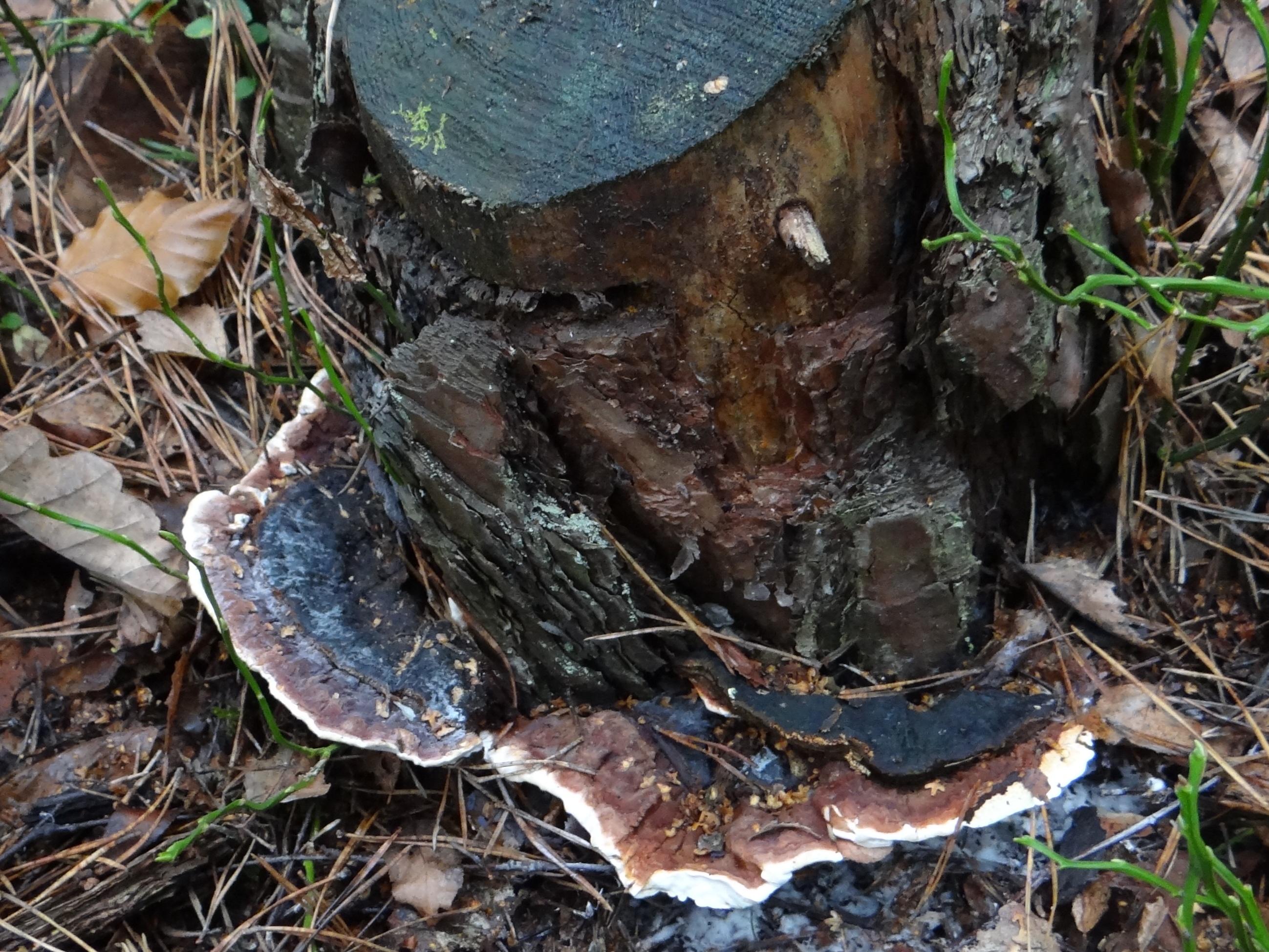
Annosus root disease
Heterobasidion annosum
What is Annosus root disease (Heterobasidion annosum)?
Heterobasidion annosum, or Annosus root and butt rot, is a host-specific fungus that infects conifers in forested areas. It can also affect certain hardwoods. Symptoms of Annosus root disease include yellowing foliage, stunted growth, premature leaf drop, resin-soaked areas, white fungal mycelium near the base, and brittle roots. The disease progresses slowly, often taking several years to exhibit visible signs, and more than half of the tree can die before symptoms become apparent. Infected trees show abnormal needle growth, and pale-yellow bark, and eventually succumb to the disease.
How does Annosus root disease (Heterobasidion annosum) occur?
Heterobasidion annosum reproduces through airborne spores that infect wounds around the base of tree trunks or freshly cut stumps. The fungus can also spread naturally when trees of the same species grow near each other and form root grafts, allowing the pathogen to move from one tree to another. Once infected, hosts may not display aboveground symptoms for a considerable time, allowing the fungus to silently spread and cause damage.
Symptoms
1 - Plant Health
• Infected conifers face root decay, reduced nutrient uptake, stunted growth, leaf drop, and eventual tree death. • Infected trees have reduced timber quality and value due to decay. Causes economic losses and has great impacts on the timber Industry (Furniture & paper industry).
2 - Soil Health and Forest Ecosystem
• Infected roots undergoing decay can cause changes in soil characteristics, impacting soil stability, nutrient cycling, and water-holding capacity. These alterations can also influence soil microbial populations. • As a result of tree loss, there are changes in forest structure and composition, which can have implications for biodiversity, wildlife habitats, and overall ecological balance.
Solutions
1 - Cultural Practices
• Maintain proper tree spacing to reduce root-to-root contact and limit disease transmission. • Select and plant tree species or varieties with natural resistance to pathogens. • Promote overall tree health through appropriate silvicultural practices, including thinning and pruning. • Encourage a diverse and resilient forest ecosystem, reducing the vulnerability to disease outbreaks. • Remove and destroy infected stumps, logs, and other potential sources of spores.
2 - Biological Control
• Fungal species like Phlebiopsis gigantea, Bjerkandera adusta, and Fomitopsis pinicola tested as competitors and antagonists against H. annosum. • Phlebiopsis gigantea shows promising results in eliminating H. annosum.
3 - Chemical Methods
• Apply urea solution to stumps immediately after infection. • Hydrolysis by urease enzyme raises pH, preventing H. annosum survival. • Various fungicides, including chlorothalonil, propiconazole, thiophanate-methyl, metalaxyl-M, and mancozeb, can manage Heterobasidion annosum and control its spread. • It's essential to follow proper guidelines by local regulations and recommendations.
